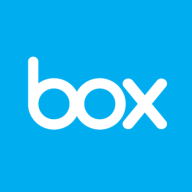

SharePoint and Box are notable contenders in the document management and collaboration field. SharePoint appears to have the upper hand in terms of integration with Microsoft's suite and extensive customization, while Box is favored for its user-friendly interface and robust security compliance.
Features: SharePoint offers strong document management and collaboration capabilities, deep integration with Microsoft Office, and powerful search functions. It provides comprehensive customization options, making it suitable for organizations requiring detailed workflows. Box excels in its easy-to-use interface across all devices, efficient file sharing, robust collaboration aids, and secure management of metadata, appealing to teams valuing simplicity and security.
Room for Improvement: SharePoint faces challenges with complex configurations, its co-authoring features, and basic search functionalities. Its complexity often demands extensive customization, which can be costly. Box users have reported issues with its search functions, integration with external apps, and high cost for some enterprise features. Additionally, Box's permissions management can be less intuitive than expected.
Ease of Deployment and Customer Service: SharePoint's deployment process is more complex, particularly for on-premises solutions requiring customization, with varied support quality that might necessitate additional investment. Box's deployment is simpler as a cloud service with less technical overhead, offering more consistent customer service experiences but sometimes challenging transitions due to the learning curve.
Pricing and ROI: SharePoint, commonly bundled with Office 365, can deliver significant ROI through its integration capabilities despite its initial higher costs, yet additional functionalities may drive costs up. Box provides competitive pricing with enterprise features and offers favorable pricing models for sectors like higher education, delivering ROI by simplifying teamwork and collaboration.
There is a lack of detailed and timely responses, and support is not always transparent with the solutions.
The quality of Microsoft's technical support is very high.
It's also difficult sometimes to get the right information because we speak at first to a generalist and they have to go to a specialist.
I am uncertain about its effectiveness at an enterprise level, where SharePoint might be preferred.
Making it easy to scale from a load-balancing and infrastructure perspective.
SharePoint is massively scalable and I would rate it as 8.5 out of ten.
SharePoint allows multiple teams to work at the same time, making it adaptable for large data volumes.
Box was very stable and did not have any latency issues.
The stability of SharePoint is high; it is quite stable and resilient.
Everything runs smoothly, and I have no problems with its stability.
SharePoint is a stable product.
Collaborative editing was challenging if multiple people were in a document at once.
Microsoft forces users to upgrade their license to access proper auditing information, which is essential and should be included in any license.
The rights management aspect can be particularly challenging, which may affect the overall user-friendliness of the product.
Expansion of scalability is needed, specifically the threshold limits for site items should be increased beyond the current 5,000 items.
Unlike Drupal, all necessary applications are included in the Microsoft license, making it cost-effective.
Microsoft offers bundled pricing for Office, SharePoint, and Exchange, making it cost-effective.
Enterprise licensing is generally cost-effective compared to individual purchases.
Box had a very easy-to-use search feature and a good user interface on its website, which was faster and better than SharePoint.
Additionally, SharePoint acts as a version control system, allowing easy recovery of past document versions.
Its rights management capabilities and ability to restrict access to certain people are also very useful.
The most valuable feature of SharePoint is the ability to collaborate on documents without having multiple versions.


Box is a Modern Content Management Platform for companies of all sizes and industries. The difference that Box brings is that it offers the security and controls admins need with the sharing and collaboration capabilities end users want. Box has made it easier for people to securely share ideas, collaborate and get work done faster. Today, more than 62,000 businesses, including 59% of the Fortune 500, trust Box to manage content in the cloud.
The Box platform provides HIPAA, FINRA, FedRAMP, and many other compliances to go with granular access permissions and advanced security capabilities.
By using Box you can sync, share, and collaborate on all types of files, anywhere, on any device - but that's just the beginning. You can choose where to store your data, to manage your own encryption keys, and set workflows to automate content-based processes. You can also assign custom metadata tags to content, watermark sensitive content, and set file retention or legal hold policies.
Box has deep, native integrations with Microsoft Office and Outlook, Google Apps for Work, Salesforce, Netsuite, Docusign, Adobe, and many other best-of-breed solutions you may already be using.
SharePoint is a Microsoft-based platform for building web applications. It covers a widerange of capabilities and while it is appropriate for experienced webdevelopers, even non-technical minded users can easily navigate through thesystem and execute functions such as collaborating data, managing documents andfiles, creating websites, managing social networking solutions, and automatingworkflow.
Major areas that SharePoint deals with are websites,communities, content, search, insights, and composites. The purpose is to give usersthe ability to create or develop these key business components on their owneven without technical knowledge of, for example, how to build a website or howto integrate coding. Configuring SharePoint into a business's system is meantto cut out all of the complicated steps, and pave the way for easierimplementation all around.
We monitor all Enterprise Content Management reviews to prevent fraudulent reviews and keep review quality high. We do not post reviews by company employees or direct competitors. We validate each review for authenticity via cross-reference with LinkedIn, and personal follow-up with the reviewer when necessary.